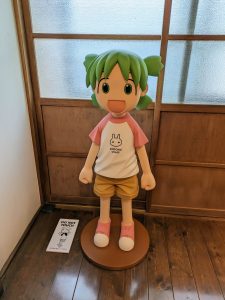I took the prettiest train ride of my entire life.
This is the second piece in my series of blogposts about my handful of recent1OK, not really recent now, it was back in December of last year, but I’m behind here!, short, 2–3 day trips. While the month prior I had very spontaneously headed down to Kyushu, this weekend’s target was just one prefecture over, to Shizuoka, and things couldn’t be quiiite as last-minute this time. I had been wanting to ride the Oigawa Railway’s two collinear lines for a while – the Ikawa Line in particular is one of Japan’s only forest railways and the only cog railway in the country, too – and I’d figured that when the fall2OK, again, not really fall, but December is unfortunately now when stupidly-hot Japan finally cools down and has the leaves change color… leaves were changing colors would be a perfect time to do it. However, the section connecting the two lines was washed away in a storm in 2022 and hasn’t been operating since. Taking the replacement bus service operated by the local town is a bit of a hassle, takes more time, and involves a lot of looking at Japanese-style timetables to figure out exactly which train to catch and when, plus securing a place to stay somewhere along the line in order to have enough time to go down and back in the daylight. Luckily I had some time to plan the week before, and there was a place that let me make a booking just a couple days ahead of time!
At the end of two eventful days, I had the absolute most magical, wonderful time exploring and staying in the little tea-rich town of Kawane, specifically the district Nukuri, filled with a heartwarming, inspiring – and unexpected – community of artists and farmers, against backdrop of an unbelievably magnificent train station and some of the prettiest views I’ve seen in the country, across bridges and through forests while traversing the course of the Oi River.
Continue reading











